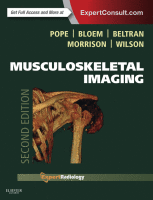Physical Address
304 North Cardinal St.
Dorchester Center, MA 02124

Acromegaly and Pituitary Gigantism Etiology Acromegaly and pituitary gigantism are conditions resulting from hypersecretion of the growth hormone (GH) from the pituitary gland. The onset of GH hypersecretion in adults after the growth plates have fused results in acromegaly. The…

Etiology Amyloidosis comprises a heterogeneous group of diseases in which otherwise normal proteins acquire alternative misfolded states and form insoluble fibrils termed amyloid fibrils. Subsequently, extracellular deposition of amyloid fibrils into various organs and tissues results in infiltration, swelling, and…

Hyperparathyroidism Etiology A review of more than 20,000 cases of primary hyperparathyroidism found that, in 89% of patients, the cause was a solitary adenoma in the parathyroid gland and that 10% had multiglandular hyperplasia. Parathyroid carcinoma and cysts causing primary…

Metabolic disorders of the skeleton affect bone as a tissue, so that all bones are involved histologically, although radiologic features are not always evident. Such diseases can be caused by genetic, endocrine, nutritional, or biochemical disorders. Osteoporosis is the most…

Etiology Myelofibrosis is a chronic myeloproliferative disorder characterized by bone marrow fibrosis and the development of extramedullary hematopoiesis. Myelofibrosis can occur as a primary disease entity (also termed idiopathic myelofibrosis or agnogenic myeloid metaplasia ) or can occur secondary to…

Etiology In 1925, Cooley and Lee described a series of patients suffering from severe anemia associated with splenomegaly and bone abnormalities. The name thalassemia , after fusion of the Greek words thalassa meaning “sea” and aima meaning “blood,” underlined the…

Etiology Sickle cell anemia, first described in a 20-year-old dental student from Grenada by Herrick in 1910, is the most common single-gene disorder in African Americans. Dr. Linus Pauling and his team identified the cause of SCA as a single…

Etiology Of all causes of hemophilia, types A and B are most associated with intraosseous and intraarticular bleeding. Hemophilia A (classic hemophilia) results from a deficiency of factor VIII. Hemophilia B (Christmas disease) is due to a functional deficiency of…

Ischemic bone lesions cover a wide spectrum of conditions with variable clinical and imaging findings in which oxygen delivery to the bone and marrow cells is impaired at least to some degree. Epiphyseal ischemic lesions have been more extensively investigated…

This chapter addresses general concepts on MRI of the bone marrow, with emphasis on common normal and abnormal marrow patterns. MRI plays a key role in marrow imaging because of its high sensitivity for detecting focal or diffuse alterations in…